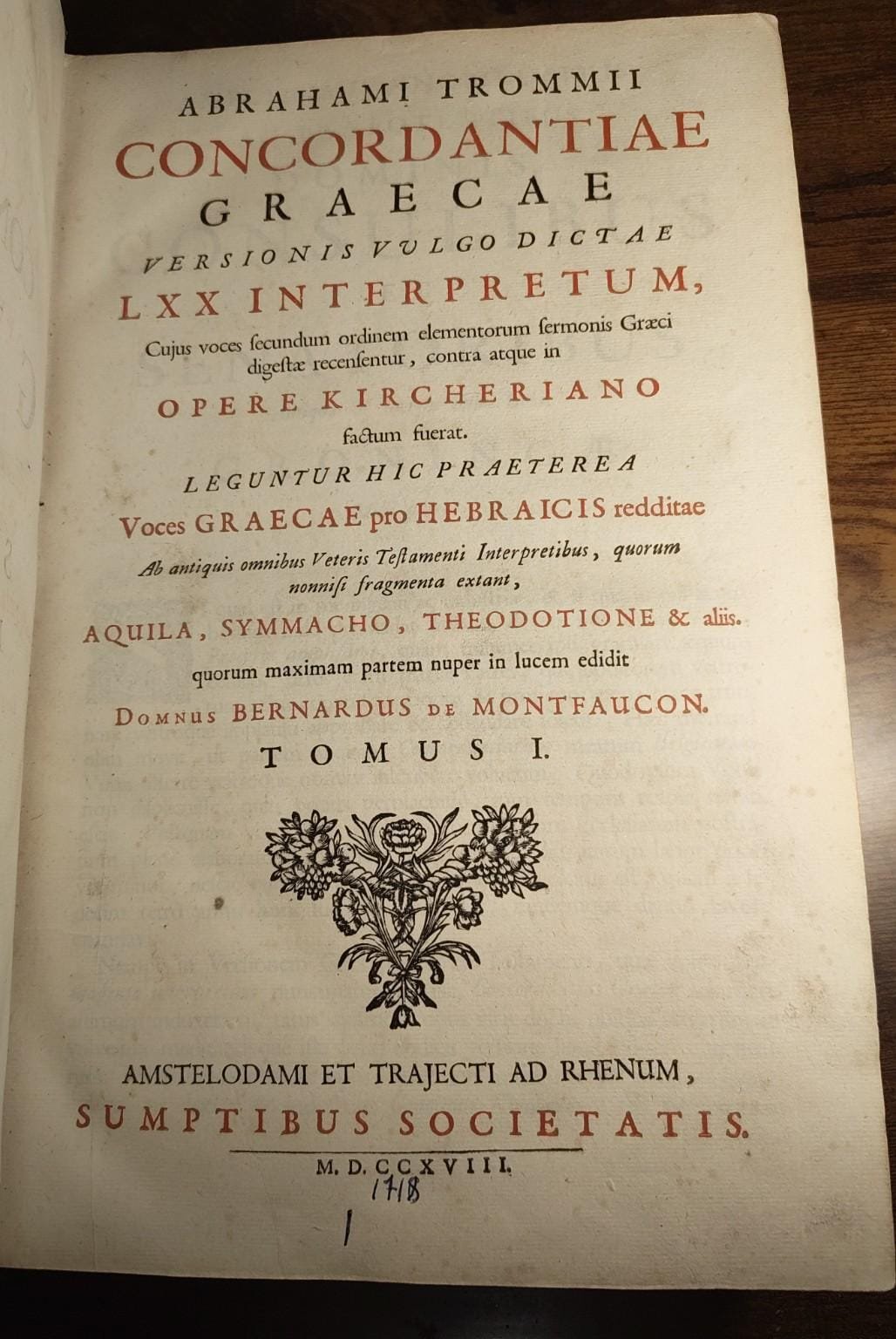 Image 1 of 10
Image 1 of 10

 Image 2 of 10
Image 2 of 10

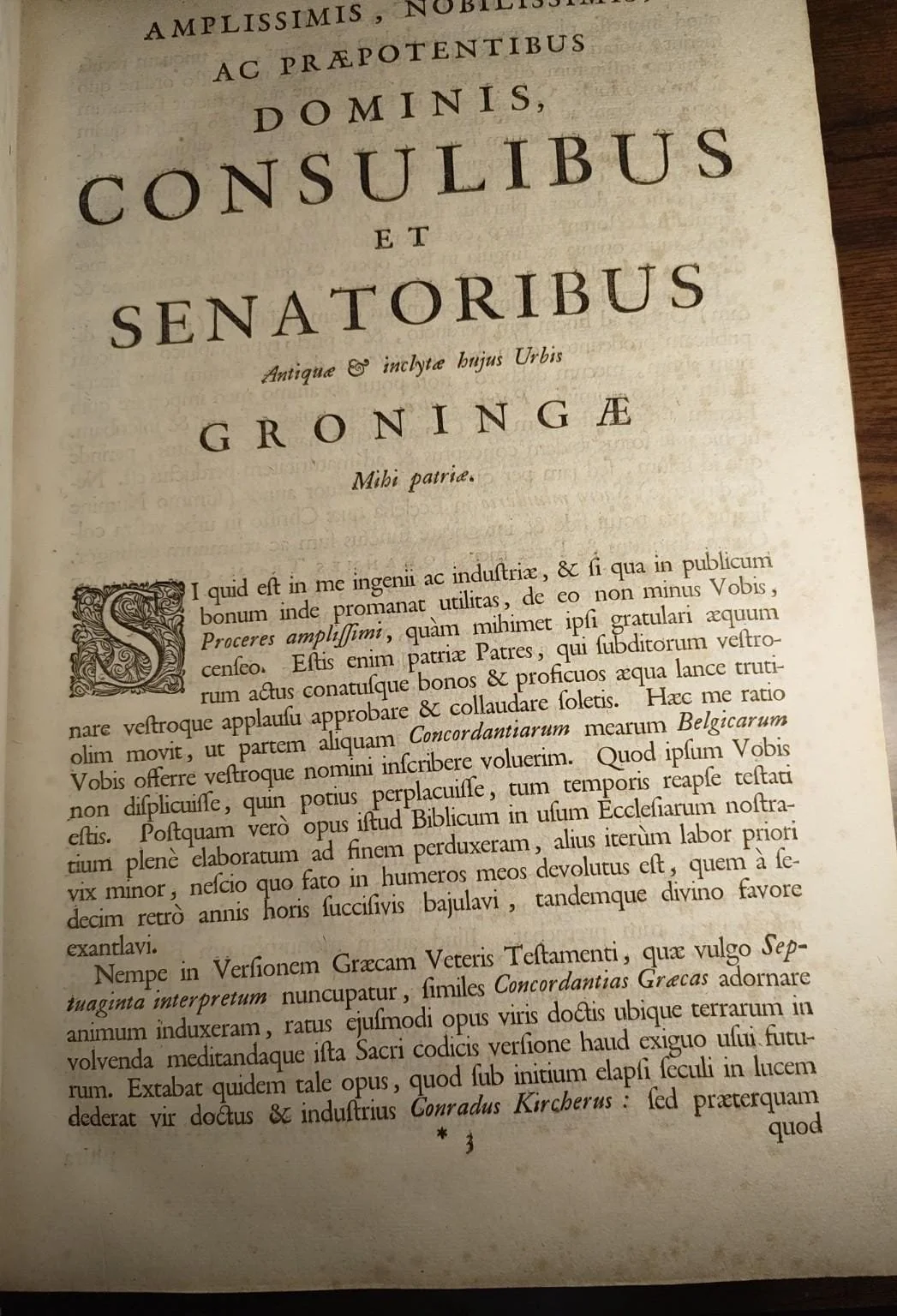 Image 3 of 10
Image 3 of 10

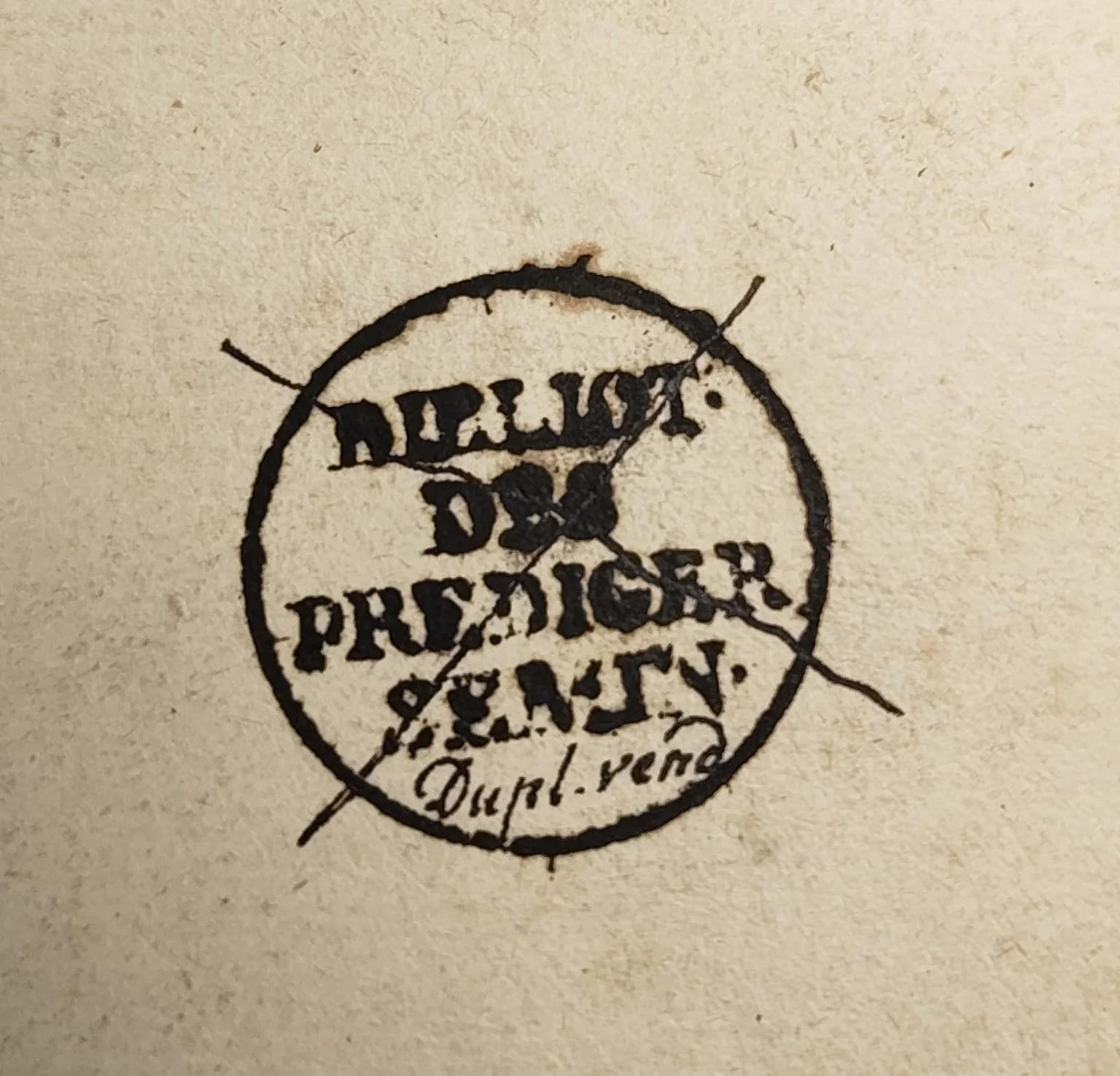 Image 4 of 10
Image 4 of 10

 Image 5 of 10
Image 5 of 10

 Image 6 of 10
Image 6 of 10

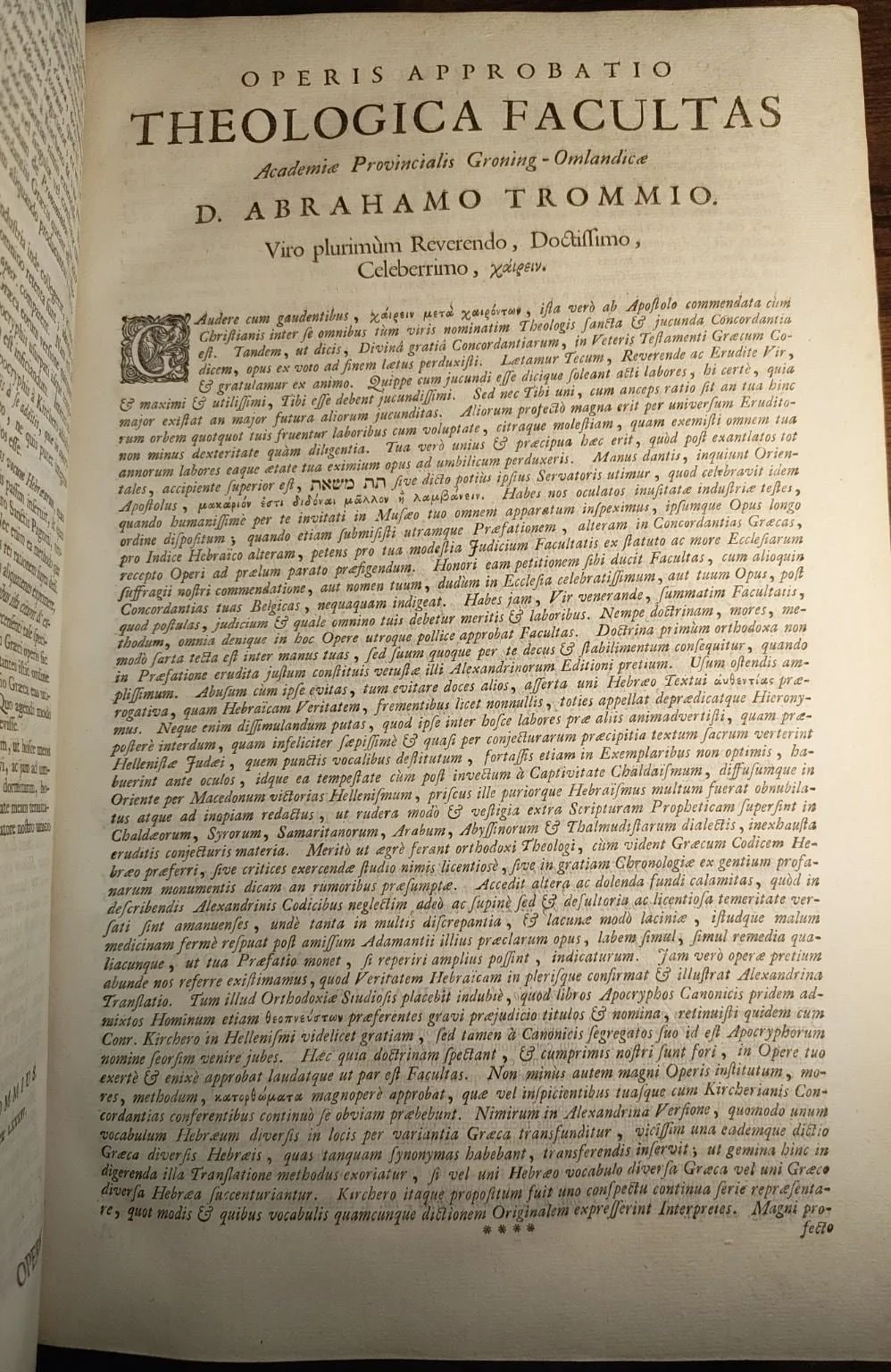 Image 7 of 10
Image 7 of 10

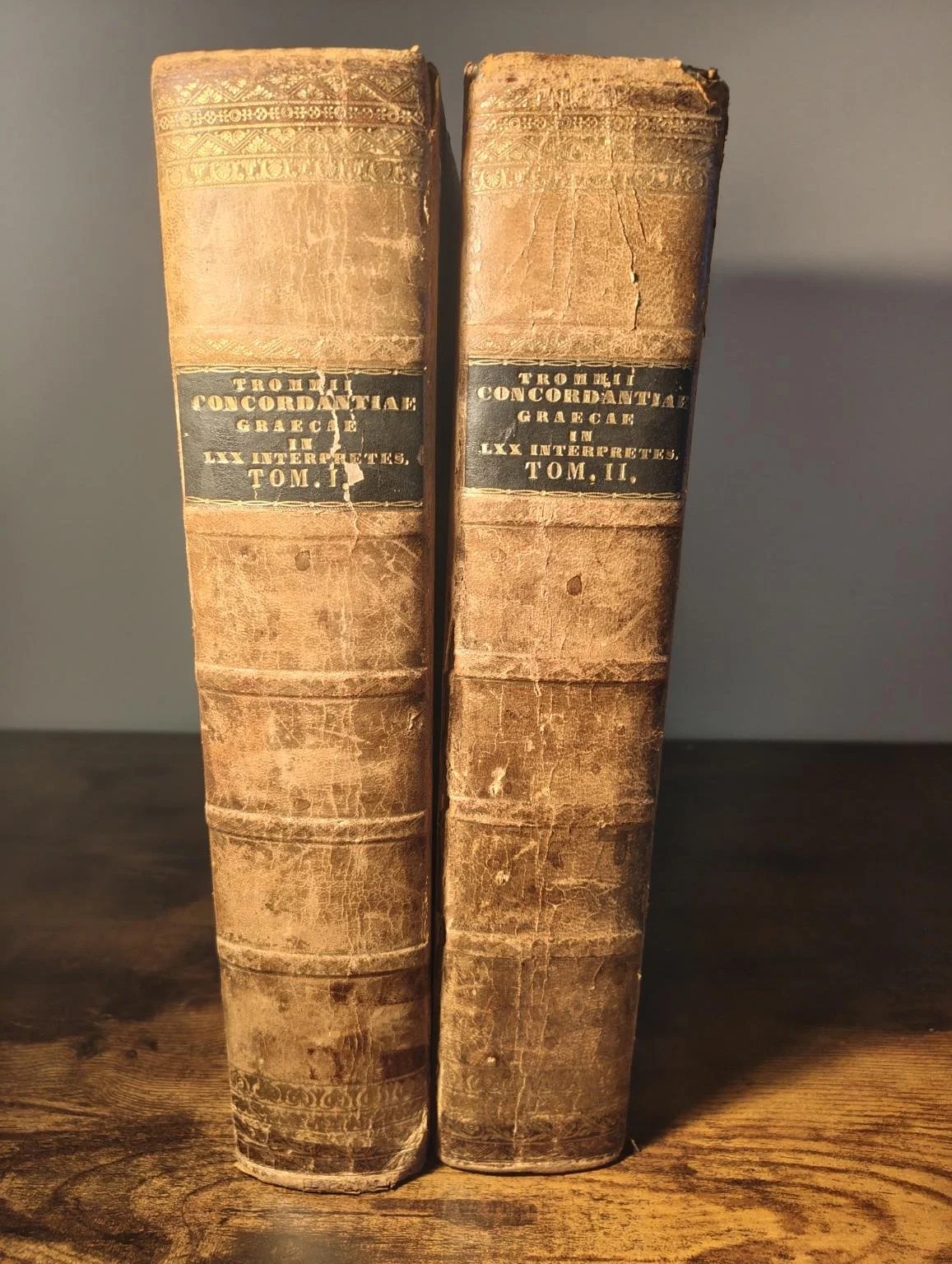 Image 8 of 10
Image 8 of 10

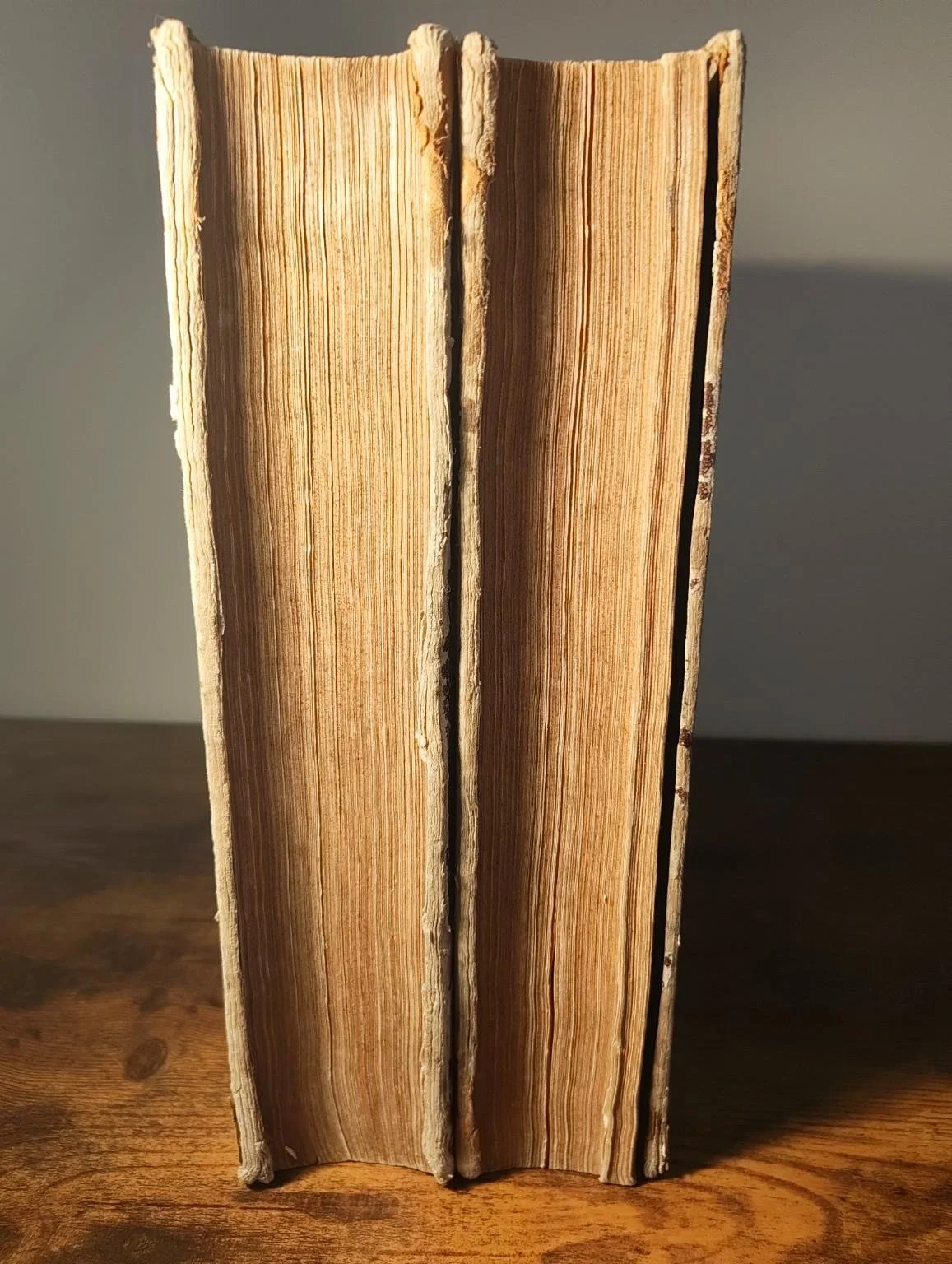 Image 9 of 10
Image 9 of 10

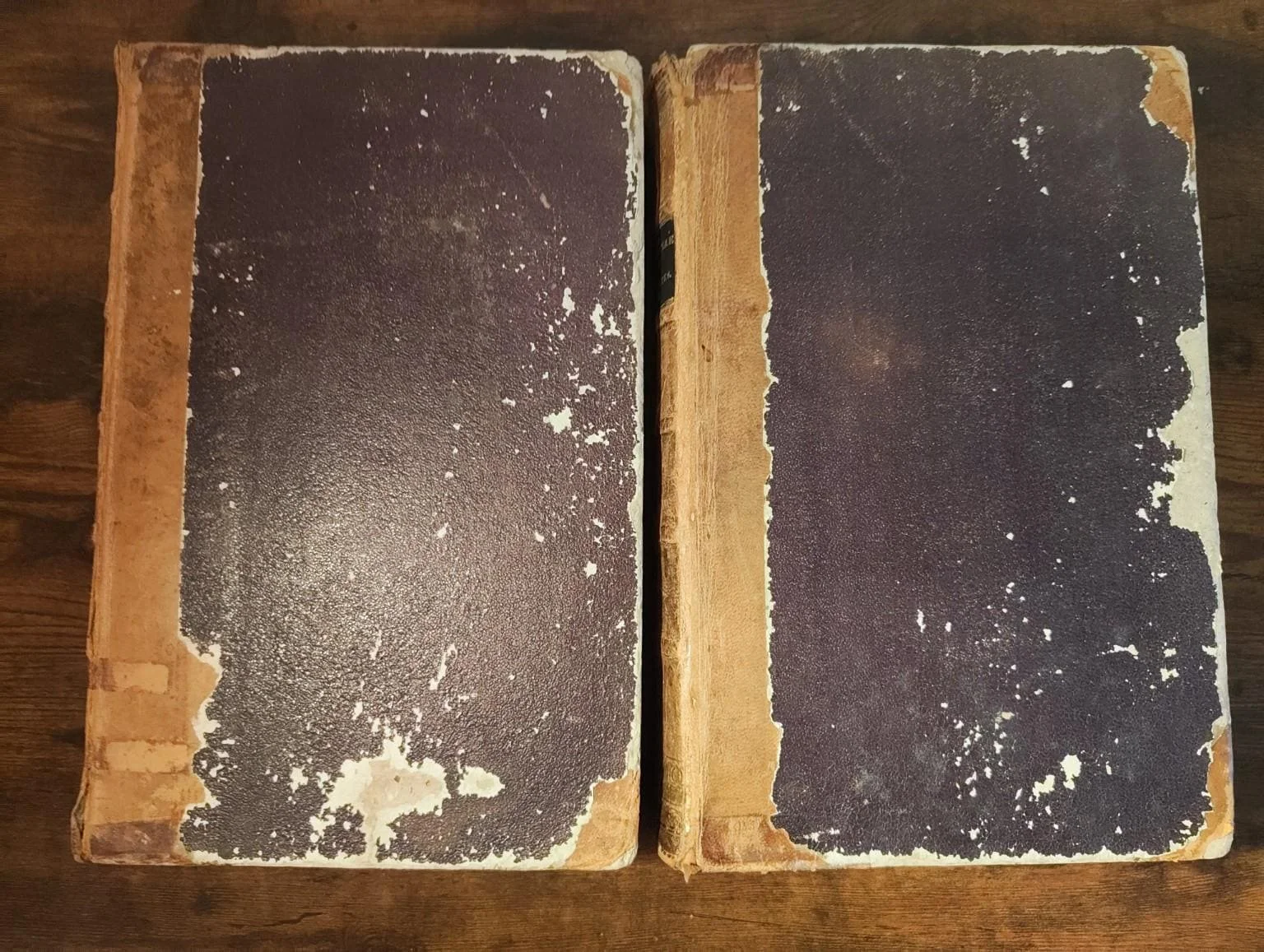 Image 10 of 10
Image 10 of 10











Concordantiae Graecae in LXX Interpretes. Abraham Trommius. Amsterdam & Utrecht 1718. Two Folio Volumes
This monumental two-volume folio set, printed in 1718, represents one of the greatest scholarly achievements of early modern biblical philology. Compiled by the Dutch theologian Abraham Trommius, the Concordantiae Graecae in LXX Interpretes offers a complete concordance to the Greek Old Testament as preserved in the Septuagint. For nearly two centuries, this work remained the standard reference for students of Greek scripture, cited in major biblical editions and bibliographies across Europe.
A landmark of Protestant scholarship
Trommius built upon the unfinished seventeenth-century concordance of Conrad Kircher, expanding and refining it into a comprehensive index of every Greek word found in the Septuagint and every passage in which each appears. The result is a work that demonstrates both the scholarly ambition and the theological rigor of early eighteenth-century Reformed Europe. Few publications convey more clearly the intellectual landscape of the Protestant academies that shaped the study of scripture during the Enlightenment.
Fine Dutch printing in folio format
Printed in Amsterdam and Utrecht by the Société, the volumes display the handsome typographic style of early eighteenth-century Dutch presses. The title pages are set in red and black. Decorative initials and headpieces introduce each section. The margins are wide. The paper is strong, laid, and remarkably well preserved.
The bindings are contemporary, with calf spines, raised bands, dark leather labels, and sturdy paper-covered boards. They show honest wear at the joints and edges but remain structurally sound.
Provenance
Both volumes are stamped “Bibliot. der Prediger zu St. N. / Dupl. vend.” indicating ownership by a German Protestant clerical or seminary library. The stamp “Dupl. vend.” suggests deaccession as a duplicate in the nineteenth century, a detail that connects the books to their long life in scholarly service.
Condition
The bindings exhibit expected rubbing and wear. The spines and boards are aged but stable. Internally, the pages are crisp, clean, and bright for their period. The printing impressions remain sharp and fully legible. There are no major defects or losses noted.
Why this set matters
Trommius’ Concordantiae is a cornerstone of biblical scholarship. It reflects a moment when philology, theology, and the new scientific spirit converged to map the textual world of the Old Testament in unprecedented detail. Its value is not only academic but historical, embodying the intellectual atmosphere of the European Enlightenment and the scholarly networks that sustained it.
A complete and well-preserved example of a foundational work in Greek biblical studies, ideal for collectors of early theological printing, Septuagint studies, or monumental folio scholarship.
This monumental two-volume folio set, printed in 1718, represents one of the greatest scholarly achievements of early modern biblical philology. Compiled by the Dutch theologian Abraham Trommius, the Concordantiae Graecae in LXX Interpretes offers a complete concordance to the Greek Old Testament as preserved in the Septuagint. For nearly two centuries, this work remained the standard reference for students of Greek scripture, cited in major biblical editions and bibliographies across Europe.
A landmark of Protestant scholarship
Trommius built upon the unfinished seventeenth-century concordance of Conrad Kircher, expanding and refining it into a comprehensive index of every Greek word found in the Septuagint and every passage in which each appears. The result is a work that demonstrates both the scholarly ambition and the theological rigor of early eighteenth-century Reformed Europe. Few publications convey more clearly the intellectual landscape of the Protestant academies that shaped the study of scripture during the Enlightenment.
Fine Dutch printing in folio format
Printed in Amsterdam and Utrecht by the Société, the volumes display the handsome typographic style of early eighteenth-century Dutch presses. The title pages are set in red and black. Decorative initials and headpieces introduce each section. The margins are wide. The paper is strong, laid, and remarkably well preserved.
The bindings are contemporary, with calf spines, raised bands, dark leather labels, and sturdy paper-covered boards. They show honest wear at the joints and edges but remain structurally sound.
Provenance
Both volumes are stamped “Bibliot. der Prediger zu St. N. / Dupl. vend.” indicating ownership by a German Protestant clerical or seminary library. The stamp “Dupl. vend.” suggests deaccession as a duplicate in the nineteenth century, a detail that connects the books to their long life in scholarly service.
Condition
The bindings exhibit expected rubbing and wear. The spines and boards are aged but stable. Internally, the pages are crisp, clean, and bright for their period. The printing impressions remain sharp and fully legible. There are no major defects or losses noted.
Why this set matters
Trommius’ Concordantiae is a cornerstone of biblical scholarship. It reflects a moment when philology, theology, and the new scientific spirit converged to map the textual world of the Old Testament in unprecedented detail. Its value is not only academic but historical, embodying the intellectual atmosphere of the European Enlightenment and the scholarly networks that sustained it.
A complete and well-preserved example of a foundational work in Greek biblical studies, ideal for collectors of early theological printing, Septuagint studies, or monumental folio scholarship.

